Home
Art
Literature
Music
Charles S. Johnson
Black Workers and the City
Works Cited
History
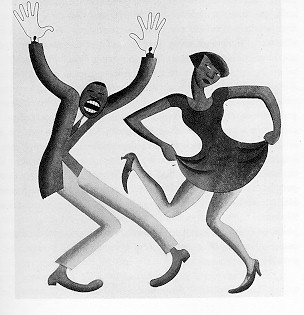 The opulent history of
Harlem during the 1920’s was driven by political and economic circumstances in
the US, world events, and changing attitudes of African-Americans about
themselves and whites about African Americans.
Numerous historians feel that the Harlem Renaissance originated during
World War I, the period from 1914 to 1918.
At this time, there was a great migration of southern rural blacks
working as sharecroppers to northern industrial cities seeking employment in
factories. Jamaican immigrant Marcus Garvey established the Universal
Negro Improvement Association (UNIA) in Harlem, and promoted a back-to-Africa
movement. Anti-black riots occurred
in East St. Louis, and Claude McKay published his first poem about the
experience of black urban masses.
The opulent history of
Harlem during the 1920’s was driven by political and economic circumstances in
the US, world events, and changing attitudes of African-Americans about
themselves and whites about African Americans.
Numerous historians feel that the Harlem Renaissance originated during
World War I, the period from 1914 to 1918.
At this time, there was a great migration of southern rural blacks
working as sharecroppers to northern industrial cities seeking employment in
factories. Jamaican immigrant Marcus Garvey established the Universal
Negro Improvement Association (UNIA) in Harlem, and promoted a back-to-Africa
movement. Anti-black riots occurred
in East St. Louis, and Claude McKay published his first poem about the
experience of black urban masses.  These
events assisted in generating the intellectual movement in Harlem, but the
Renaissance was not totally consummated until 1921.
The Volstead Act of 1921 resulted in the opening of illegal drinking
establishments, bringing whites to Harlem, and the opening of the black jazz
dancing musical Shuffle Along on Broadway also brought whites to Harlem.
Whites were interested in the speakeasies of the Harlem night life and
the jazz dancing that presided in the clubs, eventually leading to their
discovery of the exceptional artists and writers of the Renaissance.
African Americans began publishing books in great numbers at this time,
and were seeing their art work in exhibitions at museums in the city.
Black musicians became especially successful because they gained a
national audience through having their music played on the newly developed
radio.
These
events assisted in generating the intellectual movement in Harlem, but the
Renaissance was not totally consummated until 1921.
The Volstead Act of 1921 resulted in the opening of illegal drinking
establishments, bringing whites to Harlem, and the opening of the black jazz
dancing musical Shuffle Along on Broadway also brought whites to Harlem.
Whites were interested in the speakeasies of the Harlem night life and
the jazz dancing that presided in the clubs, eventually leading to their
discovery of the exceptional artists and writers of the Renaissance.
African Americans began publishing books in great numbers at this time,
and were seeing their art work in exhibitions at museums in the city.
Black musicians became especially successful because they gained a
national audience through having their music played on the newly developed
radio.
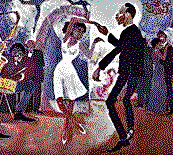
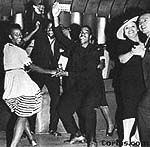
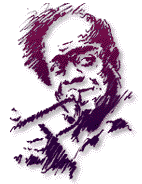
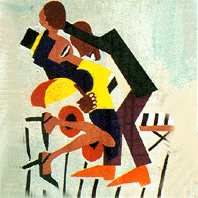
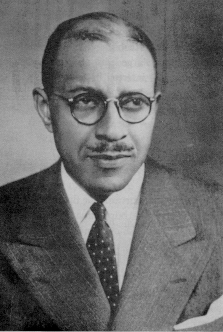 Born
on July 24, 1893, Charles Spurgeon Johnson was the son of a Baptist preacher who
taught Charles limitations on courage, and revealed to him the racial violence
that inhabited their society.
Johnson received a doctoral degree in 1917 at the University of Chicago,
where he was the director of research and investigation for the Chicago Urban
League.
After serving in the army during the first world war, Johnson returned to
Chicago in time to witness the race riot of 1919.
Having a profound interest in the event, Johnson submitted, to the Mayor
of the City, a plan to study the causes of the riot.
The mayor embraced Johnson’s plan and appointed him as associate
executive secretary of Chicago’s Commission on Race Relations.
Born
on July 24, 1893, Charles Spurgeon Johnson was the son of a Baptist preacher who
taught Charles limitations on courage, and revealed to him the racial violence
that inhabited their society.
Johnson received a doctoral degree in 1917 at the University of Chicago,
where he was the director of research and investigation for the Chicago Urban
League.
After serving in the army during the first world war, Johnson returned to
Chicago in time to witness the race riot of 1919.
Having a profound interest in the event, Johnson submitted, to the Mayor
of the City, a plan to study the causes of the riot.
The mayor embraced Johnson’s plan and appointed him as associate
executive secretary of Chicago’s Commission on Race Relations.
In 1921, Johnson traveled to New York and founded Opportunity: A
Journal for Negro Life, a magazine dedicated to arouse pride in previous
black achievements and display inevitable greatness in the race’s future.
Johnson felt that in order to break down the racism barrier in the
country, blacks’ talents in writing, painting, and performing should be
exploited and used as a weapon against old racial stereotypes.
Charles Johnson used the black writers and artists of Harlem to pursue
this goal, and supported the group through the Opportunity awards, prizes handed
out annually in recognition to the great artists and writers of this group.
Johnson traveled to Fisk University in 1927 to head the department of
social research, where he devoted his time to the study of race relations.
His research was recognized nationally through his service on the
National Housing Commission under Herbert Hoover and on the US Committee on Farm
Tenancy under Franklin Roosevelt.
In 1946, Charles S. Johnson was chosen as Fisk University’s first black
president, where he stayed until his death in 1953.
Charles
Johnson demonstrates his profound interest in the social aspects of society
through publishing his research
on the distribution of jobs to African Americans
in New York City.
He observes the influx of the blacks to the city fr om the south and west
Indies, and the negative effect that it has on native black New Yorkers.
The great migration, as many historians refer to it as, brings numerous
rural black workers into the city, leaving them with menial jobs and a
misconceived notion that blacks cannot perform any skilled labor.
Blacks are left with jobs entailing waiters, porters, messengers,
elevator tenders, chauffeurs, and janitors, all jobs requiring little to no
skill.
om the south and west
Indies, and the negative effect that it has on native black New Yorkers.
The great migration, as many historians refer to it as, brings numerous
rural black workers into the city, leaving them with menial jobs and a
misconceived notion that blacks cannot perform any skilled labor.
Blacks are left with jobs entailing waiters, porters, messengers,
elevator tenders, chauffeurs, and janitors, all jobs requiring little to no
skill.
 Johnson also notes that few blacks are ever
employed as apprentices, in
jobs that have contact with the public such as a salesman or representative, and
in jobs in which blacks will be supervising whites.
When African Americans do hold these types of jobs in the city though, it
is only because the white men are on strike and the blacks are used as strike
breakers.
This further angers the white workers towards blacks and weakens the
chances of social unity in America.
Johnson writes in his piece that blacks must organize into unions in
order to gain respect in the work field and obtain better jobs, bringing in
higher
Johnson also notes that few blacks are ever
employed as apprentices, in
jobs that have contact with the public such as a salesman or representative, and
in jobs in which blacks will be supervising whites.
When African Americans do hold these types of jobs in the city though, it
is only because the white men are on strike and the blacks are used as strike
breakers.
This further angers the white workers towards blacks and weakens the
chances of social unity in America.
Johnson writes in his piece that blacks must organize into unions in
order to gain respect in the work field and obtain better jobs, bringing in
higher wages.
However, they do not unionize and he states meanwhile they drift, a
disordered mass, self-conscious, but with their aims unrationalized into the
face of new problems.
The Urban League establishment, which Charles Johnson heads, tries to
assist with this problem, but until blacks begin to truly take initiative toward
demanding better jobs, they will remain with the servile occupations of society.
wages.
However, they do not unionize and he states meanwhile they drift, a
disordered mass, self-conscious, but with their aims unrationalized into the
face of new problems.
The Urban League establishment, which Charles Johnson heads, tries to
assist with this problem, but until blacks begin to truly take initiative toward
demanding better jobs, they will remain with the servile occupations of society.
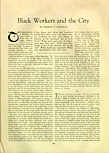
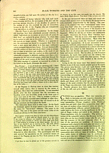
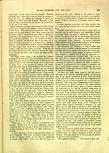
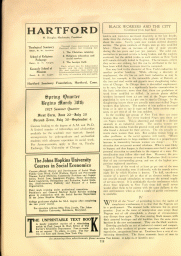
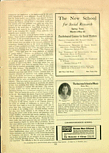
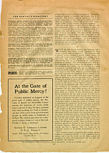
Works Cited:
Bontemps, Arna. The Harlem Renaissance Remembered.
New York: Dodd, Mead & Co., 1972.
Diesman,Jill. What was the Harlem Renaissance?.
April 2, 1998. Northern Kentucky University. January
18, 2003.
http://www.bigchalk.com/cgi-bin/WebObjects/WOPortal.woa/wa/HWCDA/file?fileid=191871&flt=High_School&pathTitles=/Harlem_Renaissance/General_History/Harlem_Renaissance&version=2&tg=History
Haskins, Jim. The Harlem
Renaissance. Connecticut: The Millbrook Press, 1996.
Johnson, Charles S. "Black
Workers and the City." Harlem: Mecca of the New Negro.
November 3, 1996.
University of
Virginia. January 13, 2003. http://etext.lib.virginia.edu/harlem/JohWorkF.html
Lewis, David Levering. When Harlem
was In Vogue. New York: Random
House Inc., 1981.
Mitchell, Reavis L. Charles S.
Johnson. December 16, 1995. African-American Members of the Tennessee
General Assembly. January 16, 2003
http://www.tnstate.edu/library/digital/johnson.htm.
Back to Top
Home
Art
Literature
Music
 The opulent history of
Harlem during the 1920’s was driven by political and economic circumstances in
the US, world events, and changing attitudes of African-Americans about
themselves and whites about African Americans.
Numerous historians feel that the Harlem Renaissance originated during
World War I, the period from 1914 to 1918.
At this time, there was a great migration of southern rural blacks
working as sharecroppers to northern industrial cities seeking employment in
factories. Jamaican immigrant Marcus Garvey established the Universal
Negro Improvement Association (UNIA) in Harlem, and promoted a back-to-Africa
movement. Anti-black riots occurred
in East St. Louis, and Claude McKay published his first poem about the
experience of black urban masses.
The opulent history of
Harlem during the 1920’s was driven by political and economic circumstances in
the US, world events, and changing attitudes of African-Americans about
themselves and whites about African Americans.
Numerous historians feel that the Harlem Renaissance originated during
World War I, the period from 1914 to 1918.
At this time, there was a great migration of southern rural blacks
working as sharecroppers to northern industrial cities seeking employment in
factories. Jamaican immigrant Marcus Garvey established the Universal
Negro Improvement Association (UNIA) in Harlem, and promoted a back-to-Africa
movement. Anti-black riots occurred
in East St. Louis, and Claude McKay published his first poem about the
experience of black urban masses.  These
events assisted in generating the intellectual movement in Harlem, but the
Renaissance was not totally consummated until 1921.
The Volstead Act of 1921 resulted in the opening of illegal drinking
establishments, bringing whites to Harlem, and the opening of the black jazz
dancing musical Shuffle Along on Broadway also brought whites to Harlem.
Whites were interested in the speakeasies of the Harlem night life and
the jazz dancing that presided in the clubs, eventually leading to their
discovery of the exceptional artists and writers of the Renaissance.
African Americans began publishing books in great numbers at this time,
and were seeing their art work in exhibitions at museums in the city.
Black musicians became especially successful because they gained a
national audience through having their music played on the newly developed
radio.
These
events assisted in generating the intellectual movement in Harlem, but the
Renaissance was not totally consummated until 1921.
The Volstead Act of 1921 resulted in the opening of illegal drinking
establishments, bringing whites to Harlem, and the opening of the black jazz
dancing musical Shuffle Along on Broadway also brought whites to Harlem.
Whites were interested in the speakeasies of the Harlem night life and
the jazz dancing that presided in the clubs, eventually leading to their
discovery of the exceptional artists and writers of the Renaissance.
African Americans began publishing books in great numbers at this time,
and were seeing their art work in exhibitions at museums in the city.
Black musicians became especially successful because they gained a
national audience through having their music played on the newly developed
radio. 



 Born
on July 24, 1893, Charles Spurgeon Johnson was the son of a Baptist preacher who
taught Charles limitations on courage, and revealed to him the racial violence
that inhabited their society.
Born
on July 24, 1893, Charles Spurgeon Johnson was the son of a Baptist preacher who
taught Charles limitations on courage, and revealed to him the racial violence
that inhabited their society.







